
SEPT. 28-OCT. 1 | DENVER



SEPT. 28-OCT. 1 | DENVER

Paramedic, VA-BC™
Hello everyone, I am delighted to warmly welcome each of you as we eagerly anticipate the 38th Annual Scientific Meeting of the Association for Vascular Access in beautiful Denver, Colorado. This conference is a testament to our collective efforts, and I am honored to serve as the chair of the design team (D-Team). I want to express my gratitude to Kasey Wisemen (2023 D-Team Chair) for her invaluable mentorship. I also extend my thanks to the 12 other D-Team members and five staff members from AVA. Our committee, representing various areas within vascular access, has worked tirelessly to ensure a diverse and enriching conference experience.
Now for the exciting news! The AVA Leadership Team has shortened the conference to a three-day event. But don't worry; this change comes with a silver lining. You will still have access to all the fantastic content at the in-person meeting and even catch up on the sessions you missed through the on-demand platform after the conference. As the chair of the team, I have carefully considered the feedback from the 2023 survey, and with the help of artificial intelligence, the D-Team is setting the course of this year's conference to meet your expectations.

For the 2024 conference, we received over 150 submissions, each blinded and reviewed by three members of the D-Team. Then, on February 24, 2024, the team spent over eight hours on a Zoom call to begin filling in a fantastic conference schedule. With the conference shifting to a three-day format, our selection process was challenging, but we persevered and got it done. As the chair, I have continued to refine the schedule to offer a balance of topics, hands-on experiences, workshops, and networking opportunities. All of this was done while trying to avoid placing competing topics/sessions in the same time slots. I often struggle to be able to attend multiple sessions in the same time slots. It will still happen this year but remember to highlight the MUST SEES and catch them on the on-demand platform.
I am thrilled to announce that we will offer a series of interactive, hands-on sessions during the conference. These sessions, included in your registration, will provide a unique opportunity for learning and networking. Please note that pre-selection is required as space is limited. Although the final plans are still being finalized, the sessions will likely cover various topics, including vascular access team development strategies, patient safety, and steps to starting a research project. These sessions will enhance your conference experience.
I cannot wait to attend the conference alongside you while taking in views of the Rocky Mountains from the Gaylord Rockies Resort & Convention Center. At the Gaylord Rockies Resort, you will have no reason to take an Uber, bus, train, taxi, or shuttle anywhere. Your needs will be met through their five restaurants, bars, an on-site world-class spa, and a state-of-the-art fitness center. However, if you stay an extra day or have some free time and decide to venture off, there is shopping at the Stanley Marketplace, Southlands, or 16th Street Mall, or you can follow your love of science to the Wings Over the Rockies Air & Space Museum or The Wild Animal Sanctuary.
Thank you to each attendee, as attendance at AVASM24 shows your dedication to this profession and, ultimately, your focus on achieving the best outcomes for the patients you serve. Also, with infinite words of appreciation, I thank the AVASM24 D-Team, members of AVA staff, and our industry partners. Without the countless paid and unpaid hours of all these individuals, this conference would not be the fantastic experience we all expected. Serving as this year's D-Team Chair is a privilege and an honor. I will continue to work on providing ALL attendees with an excellent experience, and I cannot wait to see everyone in Denver. Please do not hesitate to stop and talk with me or any members of the D-Team during the conference. We will all wear D-Team ribbons on our name badges and a D-Team jacket. We offer countless hours of volunteerism for you, so please let us know if there is anything we can do to make your conference experience more enjoyable!
Thank you to each attendee for your unwavering dedication to the profession. As we count down the days to AVASM24, know that our collective efforts will undoubtedly contribute to an unforgettable experience. I look forward to seeing you all in Denver, ready to connect, learn, and make lasting memories.
Enjoy Denver! Breakouts end at 5:45pm on Sundaytake the evening to network and enjoy Denver!
• Public Transportation: Denver boasts a convenient and affordable public transportation system, including light rail, buses, and the RTD train. You can purchase a pass or use contactless payment options. https://www. rtd-denver.com/
• Ridesharing: Popular rideshare services like Uber and Lyft operate throughout Denver, offering a convenient and flexible transportation option.
• Car Rentals: If you prefer driving, numerous car rental agencies are available near the airport and throughout the city.
• Explore Downtown Denver: Immerse yourself in the city's vibrant energy, with its diverse neighborhoods, cultural attractions, and renowned restaurants.
• Visit the Denver Art Museum: Discover renowned collections spanning centuries and cultures. https:// www.denverartmuseum.org/en
• Catch a Game: Cheer on the Denver Broncos at Empower Field at Mile High or the Colorado Rockies at Coors Field. https://www.empowerfieldatmilehigh. com/
• Hike in the Rocky Mountains: Enjoy breathtaking scenery and outdoor activities just minutes from downtown. Explore iconic trails like Red Rocks Park and Mount Evans. https://www.redrocksonline.com/
• Go Shopping: From bustling malls to unique boutiques, Denver offers a variety of shopping experiences for every taste and budget.
• Indulge in the Culinary Scene: Savor Denver's diverse culinary scene, featuring everything from traditional American fare to international cuisine and innovative food trucks.
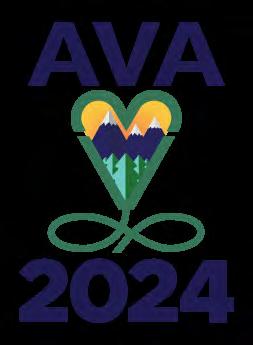



• Gaylord Rockies Resort & Convention Center: https://www.marriott.com/en-us/hotels/dengrgaylord-rockies-resort-and-convention-center/overview/
• Denver Visitor Information: https://www.denver.org/about-denver/visitors-guide/ Things to Do in Denver: https://www.tripadvisor.com/Attractions-g33388-Activities-oa30Denver_Colorado.html

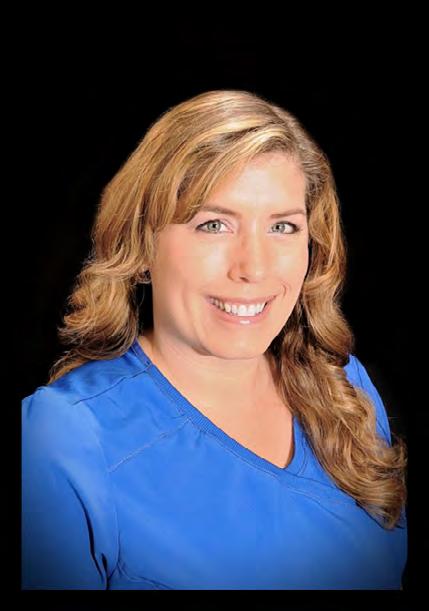
Lori Alzamora BSN, RN, CCRN, VA-BC
Vascular Access RN St. Joseph Hospital Florida, USA

Anabel Costa BSN, RN, CPEN, CPN
Pediatric Vascular Access RN
Children’s Hospital of Los Angeles California, USA

Karin Cierzan ADN, CGRN, CRNI, VA-BC
Infusion Therapy RN MNGI Digestive Health Minnesota, USA

Andrew Miller BSN, RN, VA-BC
Vascular Access Operational Lead Parkview Health Indiana, USA
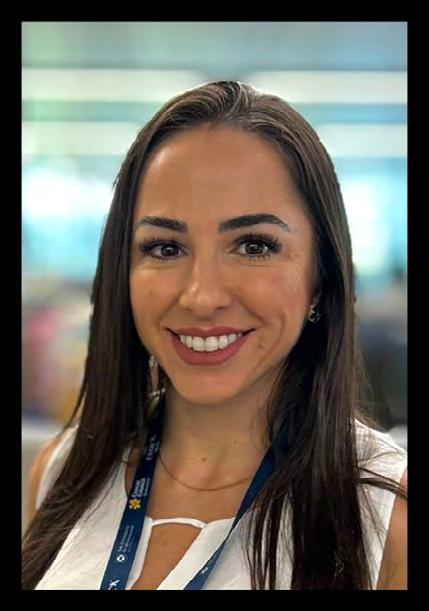
Sabrina de Souza RN, PhD
Pediatric/Neonatal Vascular Access Researcher RN University of Queensland, AU Universidade de Santa Catarina, Brazil
SATURDAY, SEPTEMBER 28 | 8:30 — 9:30 AM
AURORA BALLROOM A
Do you remember what it felt like to be a child?
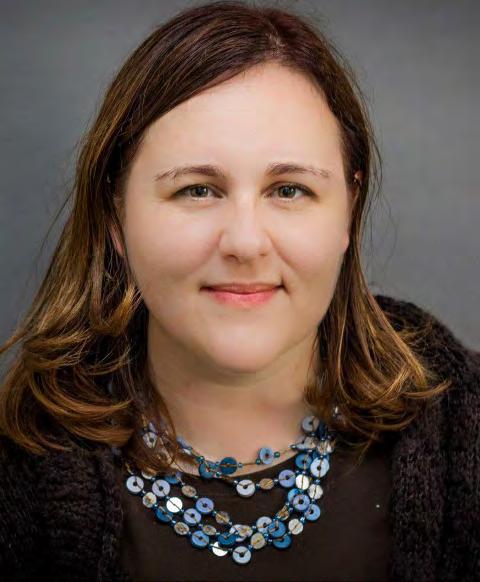
Do you remember a time when the possibilities were endless and nightmares might be real?
In our time of childhood we were all artists and athletes. We could paint and draw. We would jump rope and it would improve our hearts. Sometimes we would play double dutch, with a rope in each hand creating a swirling double helix, a central line of joy between two children. If you have ever jumped into double dutch, you know the timing is so very important. You look, you listen, and wait for the beat. You pause before you jump.
In this presentation, Regina Holliday speaks from within the pause, focusing on the power of story and art to improve healthcare decision making. Holliday is a patient advocate and artist known for painting a series of murals depicting the need for clarity and transparency in medical records and to reform health care standards. This advocacy mission was inspired by her husband Frederick Allen Holliday II and his struggle to get appropriate health care. Afflicted with kidney cancer, Fred suffered poor care coordination, a lack of access to data and a series of medical errors, during his 11 weeks of continuous hospitalization in five facilities. Fred’s death inspired Regina to create the change needed to drive better patient outcomes and communication for patient and families. An artist, Holliday began to use painting as a catalyst for change. With her passion for advocating for patients to receive timely access to their health care data, more clarity and transparency in medical records and better relationships with healthcare providers, her artwork became part of the national healthcare debate. Reported on in the mainstream press, as well as reviewed by such journals as BMJ and APA, Rev. Holliday has earned a platform to push for legislation that would provide better care for patients. Continuing her advocacy through art, she also started The Walking Gallery movement, where close to 500 volunteer members don business suits or blazers painted by the Walking Gallery with either their story, their loved one’s story, or their mission within healthcare.
Explain how using visual images, digital tools, printed text, combined with verbal communication plays a critical role in the provision of excellent healthcare.
Explain the importance of access to personal health data in making decisions about potential decisions in care.
Demonstrate the importance of effective communication in successful healthcare advocacy for the patient, caregiver, and society at large.
AMANDA ULLMAN, RN, PHD PROFESSOR AND CHAIR IN PAEDIATRIC NURSING
THE UNIVERSITY OF QUEENSLAND AND CHILDRENS
HEALTH QUEENSLAND
SOUTH BRISBANE, QUEENSLAND, AUSTRALIA
SATURDAY, SEPTEMBER 28 | 9:30 — 10:30 AM
AURORA BALLROOM A
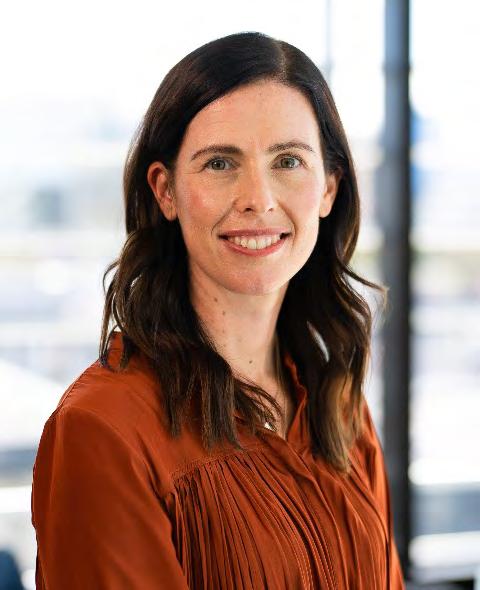
Right now, a clinician is trouble-shooting an occluded catheter in your hospital. But what is causing it? And how to we prevent and treat it?
Catheter occlusions are the most common complication associated with all vascular access devices, whether peripheral or central. The interruptions to treatment associated with catheter occlusions have consequences; for your patient, your vascular access service, and your hospital.
The aim of this presentation is to pull apart the multi-faceted physiology surrounding catheter occlusion, and examine the old and emerging evidence surrounding potential solutions to both prevent and treat this complication. The presentation will include high quality, new clinical trial data generated in Australia.
During this interactive session, we will develop a tool-kit for catheter occlusion prevention and treatment, ready for implementation at your hospital bedside tomorrow.
Explain the pathophysiology and sequelae of catheter occlusions.
Recognise the evidence-based prevention and treatment practices for catheter occlusions.
Explain the pathophysiology and sequelae of catheter occlusions.
Apply these evidence-based practices in the form of a catheter occlusion tool-kit.
ANDREW C. BULMER, PHD
PROFESSOR
GRIFFITH UNIVERSITY
SOUTHPORT, QUEENSLAND, AUSTRALIA
RHYS L. PRITCHARD, PHD
RESEARCH FELLOW
GRIFFITH UNIVERSITY
SOUTHPORT, QUEENSLAND, AUSTRALIA
SUNDAY, SEPTEMBER 29 | 9:45 — 10:45 AM
AURORA BALLROOM A


We conducted a randomised controlled trial to assess whether PIVC stabilisation could reduce catheter micro-motion and failure in healthy human volunteers. We used advanced 3D and 2D ultrasound to track catheter motion during clinician interaction with two different catheters, one with a larger platform/stabilisation. We also assessed the location of the catheter tip inside blood vessels throughout the day to assess whether stabilisation reduced catheter tip motion in response to activities of daily living. We hope that this information will help to guide clinical decision making regarding which catheter to choose, to reduce micromotion and failure, over a period of 72 hours dwell.
Define catheter micro-motion.
Demonstrate the impact that interacting with extension sets and needle-less connectors (i.e. removing non sterile tape/securement, cleaning a needle-less connector, attaching syringe to an extension set) have on catheter micro-motion in peripheral veins.
Demonstrate the extent of catheter micro-motion from morning to afternoon on the first day of dwell.
Describe the impact of two catheter securement platforms on catheter micro-motion, thrombus formation and failure of peripheral intravenous catheters.
Describe the patient experience when using PIVCs with and without additional securement platforms.
ANESTHESIOLOGIST AND INTENSIVIST
CAREGGI UNIVERSITY HOSPITAL FLORENCE, TOSCANA, ITALY
MONDAY, SEPTEMBER 30 | 12:15 — 1:15 PM AURORA BALLROOM A
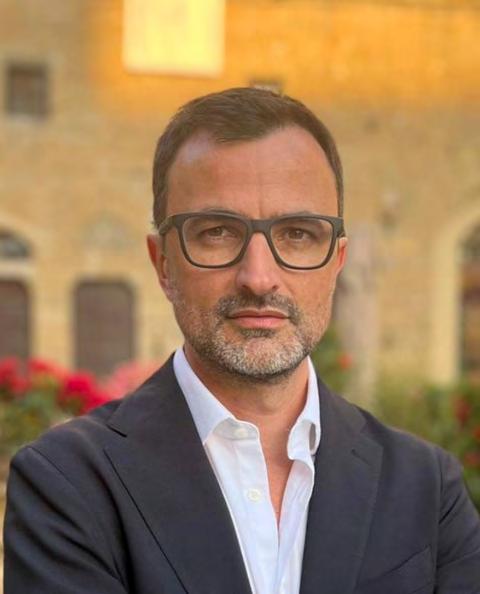
Fibroblastic sleeve (FS) is one of the most neglected and misinterpreted of the many phenomena associated with the clinical practice of inserting venous access devices (VADs). While a vast literature exists about the pathogenesis, diagnosis, prevention, and treatment of catheter-related infections, catheter-related thrombosis (CRT), lumen occlusion, and so on, the studies that have addressed FS are quite scarce in the literature.
In clinical practice, CRT and FS are very often misinterpreted as the same entity. On the contrary, they differ in terms of pathogenesis, diagnostic features and clinical outcomes. Also, treatment is different. This confusion, may lead to inappropriate treatments, decreased patient safety and increased costs. Therefore, a deep understanding and clear distinction of these two conditions are definitively warranted.
Define catheter-related thrombosis and fibroblastic sleeve
Describe pathophysiology, diagnostic features, clinical impact and treatment options of catheterrelated thrombosis
Describe pathophysiology, diagnostic features, clinical impact and treatment options of fibroblastic sleeve
LORI KACZMAREK, MSN, RN, VA-BC (SHE/HER/HERS)
DIRECTOR OF CLINICAL EDUCATION
H. B. FULLER MEDICAL ADHESIVE TECHNOLOGIES
FRANKLIN, WISCONSIN
RUSSELL S. NASSOF, JURIS DOCTORATE (HE/HIM/HIS) EVP- CHIEF STRATEGY
OFFICER-LEGAL RISKNOMICS
HENDERSON, NEVADA
MONDAY, SEPTEMBER 30 | 2:30 — 3:30 PM AURORA BALLROOM A


The proposed changes in US hospital-acquired infections (HAIs), including hospital-onset bacteremia and fungemia (HOB), will require reporting the growth of a recognized bacterial or fungal pathogen from a blood culture specimen drawn on or after day 4 of a patient's admission. This definition opens a Pandora's Box of legal and clinical implications for healthcare organizations. The Hospital-Acquired Condition (HAC) Reduction Program is a value-based purchasing program for Medicare that supports the Centers for Medicare and Medicaid Services' (CMS) long-standing effort to link Medicare payments to healthcare quality in the inpatient hospital setting. The changes would require mandatory reporting, public reporting, and potential for payment reductions like that of central line-associated bloodstream infections (CLABSIs).
Other vascular access catheters like peripheral intravenous catheters (PIVCs), midlines, and arterial catheters have long lacked care and maintenance strategies like those used to prevent CLABSI. Bundled infection prevention strategies for CLABSI must be considered for all vascular
access devices. This presentation will explore the legal basis of HOB and potential liability and financial impact on hospitals. This discussion will present harm reduction strategies using current and new technologies in bundles for vascular access catheter-related HOB.
Explain the legal basis for Hospital-Onset Bacteremia (HOB) liability.
Analyze the financial and human cost of HOB
Identify legally defensible best practices to mitigate liability for HOB.
Consider pathology of vascular access-related infections from all catheters.
Explore the history and science behind bundled interventions for infection prevention.
UNIVERSITY OF IOWA STEAD FAMILY CHILDREN'S HOSPITAL
IOWA CITY, IOWA
SATURDAY, SEPTEMBER 28 | 1:45 — 2:45 PM
SUMMIT 4/5
Children with chronic medical conditions, such as intestinal failure (IF), have significant long term medical needs that involve multiple daily procedures a caregiver provides in the home setting. Caregiver medical training, provided by a health care professional, requires the caregiver to develop critical thinking skills to understand not only the clinical concerns with the underlying condition (IF) but also be capable of troubleshooting technical complications with the home infusion devices including the CVC, medical supplies, and the medical infusion pump. To prepare a family for years of ongoing complex care with limited options for respite care the home experience of daily care for children with IF needs to be better understood. By increasing our knowledge of their experience outside of the hospital we can help develop better resources and support to supplement the care they give at home.
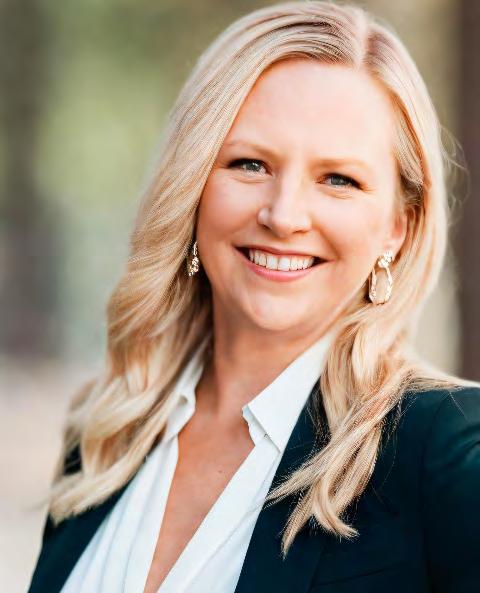
Verbalize understanding of the burden of care caregivers experience while providing CVC care for children in the home setting.
Identify gaps in training and transition from the hospital to the home.
Demonstrate ways to better support and partner with caregivers to optimize medical care provided in the home setting.
JACKELYN N. LUTES, RN, BSN, CPN, VA-BC (SHE/HER/HERS)
VASCULAR ACCESS CLINICAL EDUCATOR AND STAFF NURSE
CHILDREN'S MINNESOTA RICHFIELD, MINNESOTA
JUDY GOEBEL, RN BAN PHN VA-BC (SHE/HER/HERS) RN
CHILDRENS MINNESOTA STILLWATER, MINNESOTA
CASSIE DUFRESNE, BSN, RN, CPEN, CPN, TCRN (SHE/HER/HERS)
PATIENT CARE MANAGER - VASCULAR ACCESS
CHILDREN'S MINNESOTA MINNEAPOLIS, MINNESOTA
CARRIE OVERGAARD, BSN, RN, PHN (SHE/HER/HERS) QUALITY/PATIENT SAFETY COACH
CHILDREN'S MINNESOTA MINNEAPOLIS, MINNESOTA
SUNDAY, SEPTEMBER 29 | 4:45 — 5:45 PM CREST 3/4
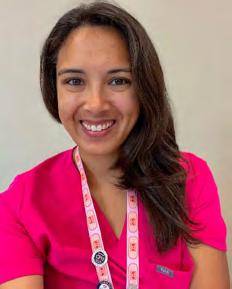
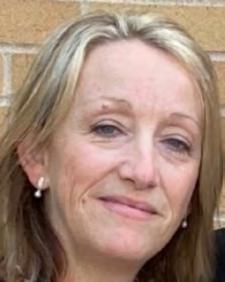
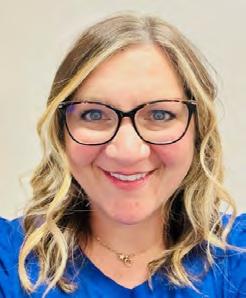
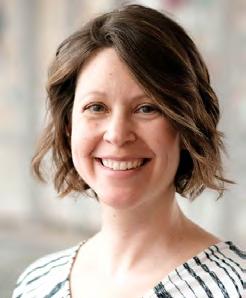
Does your hospital suffer from breakdowns in communication? Do you find yourself feeling uncomfortable when conflicts arise? Are you hoping to make an impact and improve the quality of care? This session will demonstrate patient safety coaching techniques and discuss how a vascular access team is using these techniques to change the culture, address educational gaps, and increase awareness of vascular access device care.
Describe coaching tools and common forms of resistance and a model for dealing with resistance.
Recognize and utilize error prevention techniques.
Demonstrate how patient safety coaching techniques can fit into the workflow of a vascular access specialist
KRISTIN K. JACOBS, DNP, RN, CRNI, VA-BC, NEA-BC DIRECTOR OF CLINICAL PROGRAMS
MEDLINE INDUSTRIES, LP AND ADVENT HEALTH
WESLEY CHAPEL, FLORIDA
JOHN HALL, BSN, RN, VA=BC (HE/HIM/HIS)
VASCULAR ACCESS RESOURCE NURSE
GEISINGER
BLOOMSBURG, PENNSYLVANIA
KRISTEN SEAMANS, MSN, RN, CRNI, VA-BC
REGIONAL VASCULAR ACCESS OPERATIONS MANAGER
GEISINGER NORTHEAST
GEISINGER
FACTORYVILLE, PENNSYLVANIA
MONDAY, SEPTEMBER 30 | 8:45 — 9:45 AM SUMMIT 6/7



Patients in a nine-hospital health system were developing central line bloodstream infections at a rate higher than the national rate and what the system had seen in previous year. Central line associated bloodstream infections (CLABSI) result in thousands of deaths each year and billions of dollars in added costs to the U.S. healthcare system, yet they are preventable. The health system started looking for creative ways to improve outcomes while reducing costs and did something unusual. We took the relationship between a health system and its preferred supplier—typically based on distrust and almost solely fee-forservice—and turned it on its head! Instead, Geisinger invited the supplier to have a seat at the table and skin in the game.
Outline the goals and economic model of the risk arrangement
Review the project timeline and interventions
Analyze the results of the risk partnership
Discuss the importance of commitment and accountability in a risk partnership
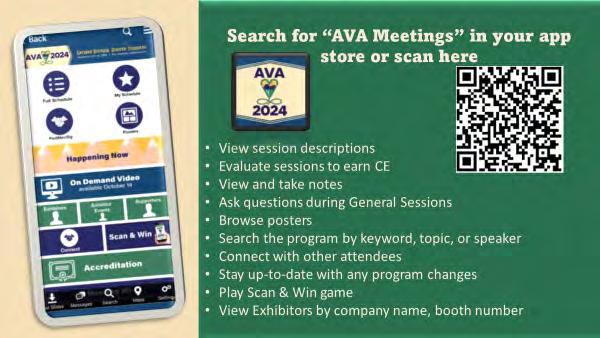


12:00 — 1:30 PM
AURORA BALLROOM B
SPONSORED BY: SATURDAY, SEPTEMBER 28

SYMPOSIUM SPEAKERS:
Amy Mailand Paradis, MS, NNP-BC, CNS Doctors Medical Center Modesto, California
Jennifer Ballard, BSN, RN, CIC (she/her/hers)
Infection Prevention Lead Mercy Health, Springfield Republic, Missouri
Tricia M. Kleidon, RN, MNSc (Nurs. Prac), PhD (c) Nurse Practitioner & Research Fellow Queensland Children's Hospital and University of Queensland Stanley Street, Queensland, Australia
Vascular access (VA) crosses our lifespan, and many of us experience the need for a vascular access catheter at least once. The insertion of any VA catheter type is not benign and carries the risk of early device failure, infection, bleeding, and pain. A cycle of frequent device replacements adds to the cost, patient dissatisfaction, physical and emotional trauma, and more complications like thrombosis and venous depletion.
This exhibitor symposium includes panel participants with vascular access and infection prevention experience across all patient populations. Each brings years of experience using SecurePortIV® catheter securement adhesive to protect all VA catheter types. Our clinical experts will share their knowledge and clinical outcomes using SecurePortIV®.
Overwhelming evidence exists demonstrating the effectiveness and safety of SecurePortIV®. Studies have shown a significant reduction in catheter-related bloodstream infections (CRBSI) when added to care and maintenance. Other studies provide evidence about hemostasis, reduced catheter dislodgment, and improved dressing adherence.
The results of recent clinical trials will be shared along with the cost performance of tissue adhesive compared to alternative products for daily vascular access care. Neonatal and pediatric patients present unique VA securement challenges, including umbilical catheters and peripheral devices. Learn how SecurePortIV® provides safe and effective securement in even the tiniest babies. Finally, Hospital-Onset Bacteremia and Fungemia (HOB) recognizes that all VA catheters, including peripheral intravenous catheters (PIVC), can be the source of infection. Hear an infection preventionist's experience implementing SecurePortIV® on all VA catheters, including PIVC, and the associated reduction in catheter-related infections.
This engaging presentation and discussion will allow time for our clinicians to answer your questions.
Grab your lunch and join us in the Exhibitor Theater in the back of the Exhibit Hall to hear from industry experts! Sunday starting at 11:30 AM and Monday starting at 10 AM. Check the schedule online or in the app for topics and speakers.
SATURDAY, SEPTEMBER 28
12:00 — 1:30 PM
AURORA BALLROOM CD
SPONSORED BY:
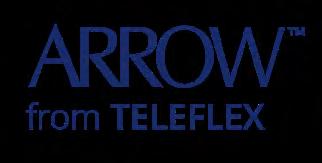
SYMPOSIUM SPEAKERS:
Amy Bardin-Spencer, EdD, FAARC, RRT, VA-BC™ Global Vice President, Clinical and Medical Affairs Teleflex Scottsdale, Arizona
Luz Caicedo, MPH, CPH, CIC, CRCST, VA-BC Infection Prevention Manager
AdventHealth Celebration Kissimmee, Florida
Are you prepared for Hospital Onset Bacteremia and Fungemia (HOB) reporting measures? This session will review current strategies and technologies to consider as vascular access teams and healthcare organizations. We will discuss stakeholder engagement essential for a successful partnership to support HOB initiatives. Last, we will review examples of bundles and implementation protocols to ensure practice standardization and tracking.
Learning Objectives
• Review current strategies/technologies to prepare for HOB
• Discuss the partnership and protocols to support HOB
• Review bundle strategies specific to HOB
• Outline stakeholders needed to collaborate within your organization to prepare for HOB
SATURDAY, SEPTEMBER 28
12:00 — 1:30 PM
AURORA BALLROOM CD
SPONSORED BY:

SYMPOSIUM SPEAKERS:
Britt Meyer, PhD, RN, CRNI®, VA-BC™, NE-BC (she/her/hers) Nurse Manager Operations-Vascular Access Team Duke University Hospital Cary, North Carolinana
Luz Caicedo, MPH, CPH, CIC, CRCST, VA-BC
Infection Prevention Manager
AdventHealth Celebration Kissimmee, Florida
Peripheral Venous Catheters (PVCs) are commonplace in healthcare settings, yet the recognition of PVC-associated bloodstream infections (PLABSIs) remains obscured by inadequate reporting and surveillance. This symposium delves into the epidemiology, prevalence, and clinical implications of PLABSIs, particularly in the context of Hospital-Onset Bloodstream Infections (HOBSIs). We aim to refocus on the foundational aspects of infection prevention, emphasizing the importance of essential practices and bundle implementation. Participants will explore the challenges in surveillance and reporting, gaining insights into effective strategies for enhancing patient safety. By fostering collaboration and innovation, this symposium seeks to address current gaps in research and practice standards, equipping healthcare professionals with the knowledge to tackle PLABSIs effectively.
Submissions accepted until November 17, 2024
www.avainfo.org/CFP2025
Vascular Access, is a notfor-profit multidisciplinary professional organization uniquely positioned as the leader in vascular access education and research. Its mission is to improve patient safety, comfort and outcomes, define the vascular access specialty, promote a favorable public policy environment, optimize professionals’ knowledge and skills, share best practices, and promote research in vascular access.
AVA’s membership includes clinicians from many disciplines including nursing, medicine, radiology, respiratory therapy, pharmacy, as well as consumers, professionals from industry, education, research, and others with an interest or specialization in vascular access and related fields.
Meeting attendees come from many countries and include professionals from:
Interventional Radiology • Oncology • Surgery • Education and Training • Critical Care • Home Care • Home Infusion
• Hematology • Radiology • Pediatrics and Neonatology
• Nephrology and Dialysis • Anesthesiology • Infectious Disease • Infection Prevention
• Vascular Access • Research and Development • Sales and Marketing • Engineering
2025 marks AVA’s 39th Annual Scientific Meeting with at least 1,300 attendees, which include 60–70 industry partners. The meeting site is in Kissimmee, Florida at the Gaylord Palms Resort & Convention Center
AVA demonstrates its leadership role in the art and science of vascular access. This three-day conference (September 19-21, 2025) provides attendees with opportunities to participate in educational sessions, hands-on training, facilitated discussion, and networking.
GENERAL SESSIONS focus on development of the vascular access specialty, clinical research, professional development, technological advances, and evidence-based practice.
BREAKOUT SESSIONS will offer small group presentations emphasizing subjects of interest for the vascular access specialist and related disciplines; abstract and poster presentations allow participants to share original research, education projects and clinical innovations.
SYMPOSIA, VA TALKS, and EXHIBITS afford participants, industry partners, and exhibitors the opportunity to learn from one another in order to design and apply new technologies, science, and techniques in the most effective ways.
With separate registration fees, an additional day of Pre-Meeting Workshops (September 18, 2025) offers in-depth exploration of topics of critical importance to the vascular access community.
The Call for Topics seeks submissions from:
1) Professionals who wish to submit a topic for presentation.
2) Recommendations for speakers and/or topics to be included in the Scientific Meeting.
• Participation and submission of topic suggestions is NOT limited to AVA members.
• Topics should address the general or specific interests of AVA members and meeting participants keeping in mind that AVA is an organization of clinicians, healthcare specialties, and industry/ corporate professionals involved in vascular access and related fields.
• Presentations must avoid any semblance of commercialism.
• General Sessions are limited to 60 minutes in length.
• Breakout Sessions may be scheduled from 30 to 60 minutes in length at the discretion of the selection committee.
• Hands-On Workshops may be scheduled for a full day (8 hours) or for a half day (4 hours).
• You may submit more than one topic, but please note that each speaker may be limited to presenting at only one invited session and one poster/oral abstract as the principal author.
• AVA values diversity, inclusion, and professional mentoring among its membership and promotes these values in its topic and speaker selection processes.
• AVA reserves the right to solicit additional and/or new speakers for any proposed topic.
The information listed below is required to complete the submission process. Each submission is reviewed by program committee members who score the key elements based on how closely the given criteria are met.
Presentation Title:
Use key words that describe the specific topic and content of the abstract. Catch phrases can be used but need to include a reference to the topic. For example, “Making a Difference” may get attention but does not suggest what the abstract is about. By adding a specific reference to the abstract subject matter, the abstract title becomes clearer; i.e., “Making a Difference: Ace Inhibitors in Hypertensive Patients.”
Target Audience:
What population is this session designed to benefit most?
Level of experience of the target audience: Basic, Intermediate, Advanced
What type of presentation is this? General Session Breakout Session* Hands-On Workshop
*Breakout Sessions may be scheduled from 30 to 60 minutes in length at the discretion of the selection committee.
Prerequisite:
Include the minimum knowledge and/or skills required to most benefit from this session.
Purpose/Goals:
This statement should be the most important primary information you want to convey for the abstract. This should be one or two sentences. The title should not be repeated.
Has this presentation been given before? Where?
Learning Objectives /Outcomes:
Minimum of three objectives are required. Provide three to five outcomes that complete the statement: “By the end of this session, the participant will be able to...” DO NOT type this statement in the text box when entering each of your outcomes.
Content Description:
The content description should be concise yet comprehensive. Ask yourself as you are reading the session description, “As an attendee, do I know what this abstract is about and would I want to attend?” Ask a colleague to read it as well while considering the same question. (max. 1,000 characters including spaces)
Additional Text:
Any additional text that expands the content description to be used for the review process. This narrative is your opportunity to provide a convincing overview of the value of your proposed session. If the reviewers cannot clearly understand what this session is about, your odds of having your abstract selected are greatly reduced. Expansion of the content description must be written in a brief, well-organized, and focused manner. In one paragraph the potential speaker should have written a narrative that:
1. Identifies the key topics that will be addressed
2. Describes any special learning activities, such as case study analysis, audience participation, or interactive discussion.
Speaker Contact Information, CV/Resume, Presentation Experience, and Availability Over Meeting Dates.
Contracts are signed only with the primary presenter. Only the Primary Presenter may be eligible for any speaker incentives. All presenters must be aware that this application is being submitted.
Some applicants will be contacted by an AVA 2025 Annual Meeting Design Team Member for a phone interview between December 2024 and January 2025 to discuss the presentation submission. Please try to return messages promptly. The interview is an integral part of the submission review process. Failure to participate, or be available for an interview may result in the elimination of the submission from the review process.
The program will be selected by February 2025 Applicants will receive notice by email.
Copyright 2024 Association for Vascular Access. All rights reserved.
Disclaimer: AVA (Association for Vascular Access) is a professional organization of vascular access professionals dedicated to improving vascular access practice and patient outcomes through education and other means. AVA publishes this periodic electronic newsletter for our membership and other interested parties for information purposes only. AVA distributes this electronic newsletter with the understanding that AVA is not engaged in rendering medical or professional service through the distribution of the IQ publication. AVA is not giving advice and does not subscribe to guarantee the accuracy or efficacy of the information provided. Privacy Policy and Unsubscribe Information -AVA maintains strict rules of confidence with regards to your email address and all other personal contact information. We will not, under any circumstances, sell, transfer, or provide your email address to any third party for any reason. Email lists are compiled on an opt-in basis by AVA for the sole purpose of distributing the IQ newsletter. AVA does not condone or participate in the distribution of unsolicited email. If you feel that you have received an email transmission from AVA in error, please contact AVA at and ask to be removed from the list. All removal requests are addressed promptly.